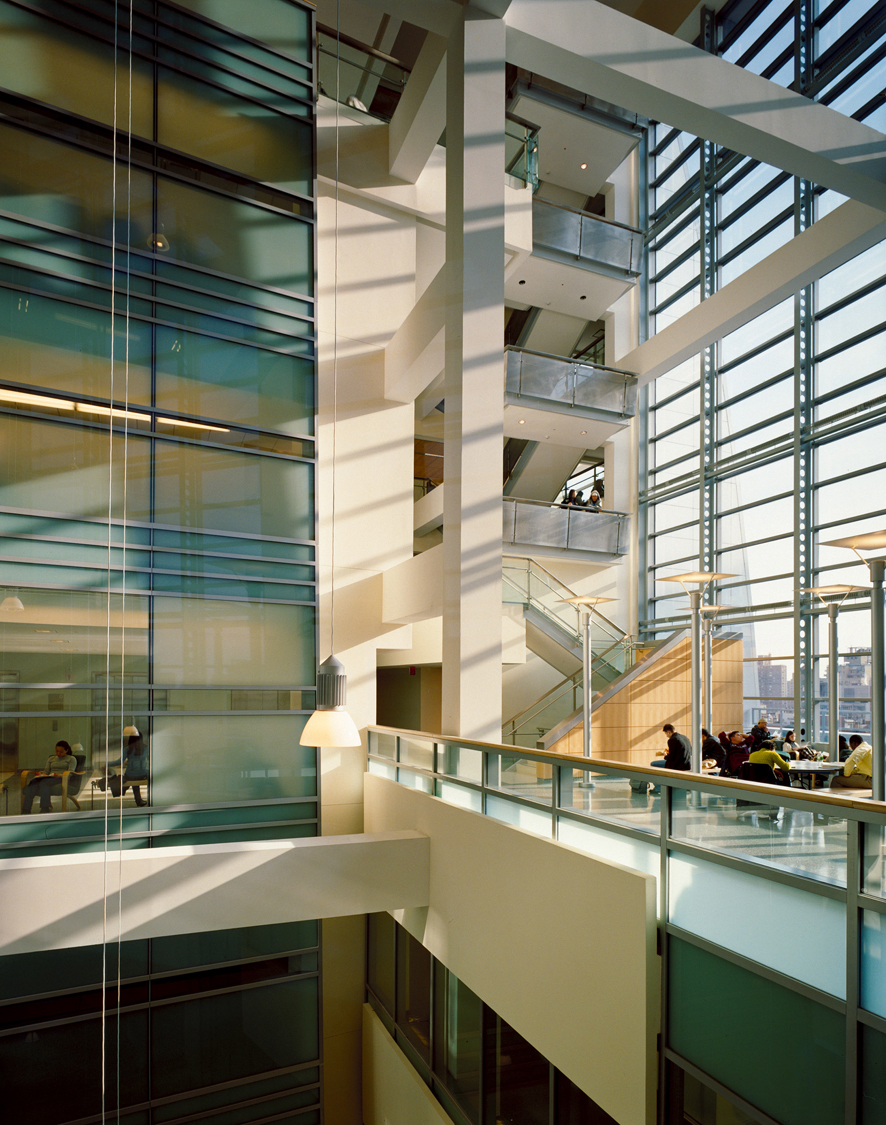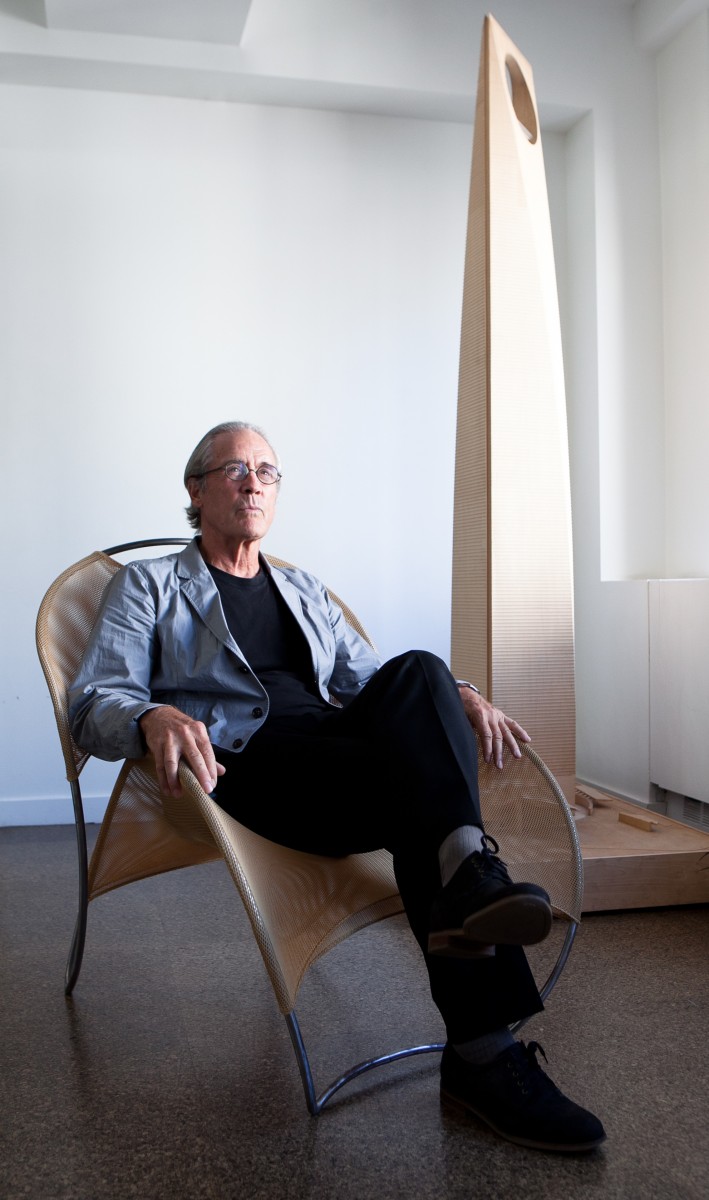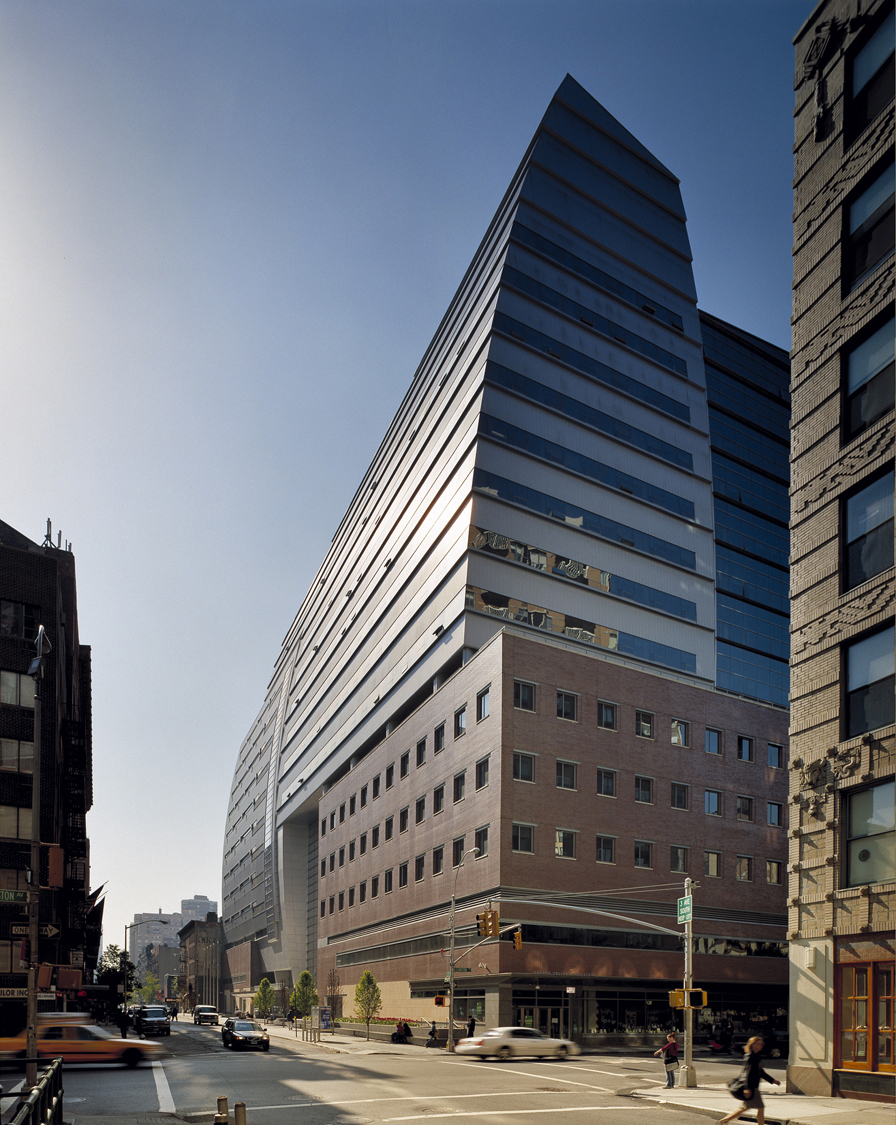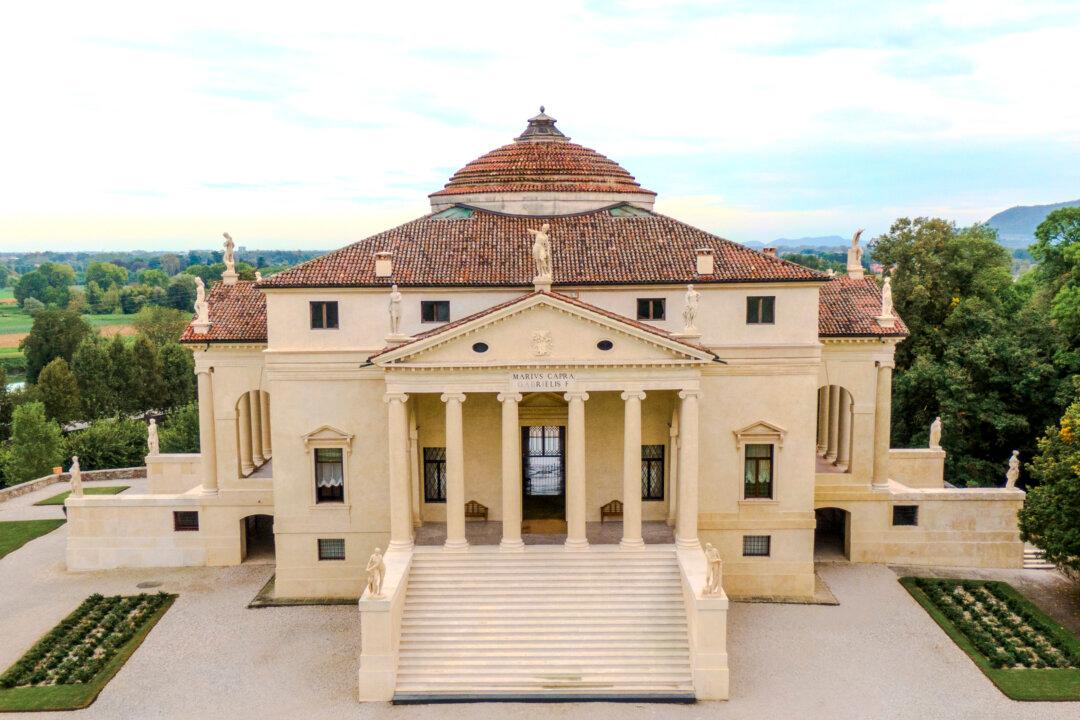NEW YORK—A source of lofty inspiration for its students, Baruch College’s Newman Vertical Campus is still being studied by architects more than 10 years after its unveiling to students and the public.
“If you come early in the morning and take out your notes, it’s so peaceful,” said student Saveendra Wijebandara, 18. “Sometimes a bird flies through. I like the format. All the classrooms are off to the side, it’s easy to navigate through.”
Wijebandara attended the school over summer, and is just starting a new semester. “It’s beautiful,” he said, gesturing to the atrium, “You can see those rays of light coming down.”
The traditional campus arranges it’s various departments and facilities around a quadrangle, where people pass through, study, or just relax. This is where student life comes alive.
“It becomes a sort of town square for the entire college campus,” said campus architect William Pedersen, of Kohn Pedersen Fox Associates (KPF). “We didn’t' have the luxury [of space] on this urban site. We could take the idea, and turn it vertical.”
Part of the City University of New York (CUNY), the 17-story vertical campus first opened in 2001, accommodating Baruch’s two largest academic units: the Zicklin School of Business and the Weissman School of Arts and Sciences.
The building hosts a variety of recreational activities in the lower floors while classes, lectures, conferences, and staff are housed in the upper floors.
The vertical quadrangle has become the heart of the building. A sequence of voids cascade though the center, forming a 13-story-high central atrium. “What really makes it is the dynamic interaction of the main spaces of the building,” Pederson said.
The atrium allows students and staff to understand and navigate their way around the building. It also provides social and study spaces filled with natural light. “One’s awareness of the sky, one’s awareness of each other outside—all of that in terms of the enjoyment of the space—it’s essential,” Pedersen said.
The unique curved form of the building and pleasant interior spaces have created identity for the college. “They [the students] take ownership of it, and have a sense of pride,” said Jim Lloyd, assistant vice president of campus operations at Baruch College.
Students have established an organization based around the building, and how to improve and take care of the facilities. Alumni often leave contributions to Baruch and specify that the funds be used for the building.
The key architectural idea can be found in other large buildings in the city such as the main concourse at Grand Central Terminal. The large central space opens to the sky through the northern windows. Soft light fills the room and, at certain times of day, shafts of light illuminate parts of the floor.
As you climb the stairs at either end of Grand Central, there is a view of the floor where you can keep a lookout for someone, or just observe life playing out. The atrium at the Vertical Campus also has this effect where each set of spaces overlook others allowing for incidental gatherings.
More recently, the MIT Media Lab, designed by Maki and Associates, also has a sequence of interior voids that play a similar role. In addition, the new Cooper Union Building by Morphosis Architects, is described on the entity’s website as “a stacked vertical piazza, organized around a central atrium to encourage social exchange.”
“There are buildings you can say have been influenced by it,” said Eric Höweler, assistant professor of architecture at Harvard Graduate School of Design. Höweler is currently running a design studio using the vertical campus as a case study.
Part of the City University of New York (CUNY), the 17-story vertical campus first opened in 2001, accommodating Baruch’s two largest academic units: the Zicklin School of Business and the Weissman School of Arts and Sciences. The building hosts a variety of recreational activities in the lower floors while classes, lectures, conferences, and staff are housed in the upper floors.
The vertical quadrangle has become the heart of the building. A sequence of voids cascade though the center, forming a 13-story-high central atrium. “What really makes it is the dynamic interaction of the main spaces of the building,” Pederson said.
The atrium allows students and staff to understand and navigate their way around the building. It also provides social and study spaces filled with natural light. “One’s awareness of the sky, one’s awareness of each other outside—all of that in terms of the enjoyment of the space—it’s essential,” Pedersen said.
The unique curved form of the building and pleasant interior spaces have created identity for the college. “They [the students] take ownership of it, and have a sense of pride,” said Jim Lloyd, assistant vice president of campus operations at Baruch College.
Students have established an organization based around the building, and how to improve and take care of the facilities. Alumni often leave contributions to Baruch and specify that the funds be used for the building.










